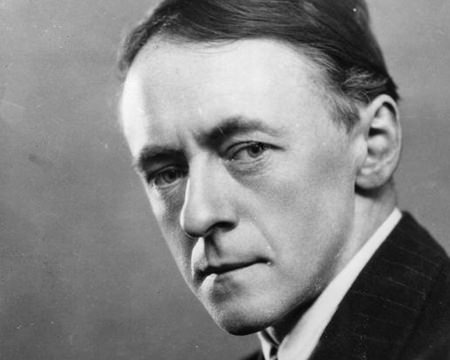
In the sultry British autumn of 2005, a poetry magazine called Magma published a list of popular poems and invited people to vote for their favourites. The results were announced at the Old Royal Naval College, Greenwich which turned out to be an appropriate venue because John Masefield’s yearning poem Sea-Fever proved to be Britain’s favourite poem.
Painters too have long been captivated by the sea’s changing moods, rhythms and colours. The matchless J. M. Turner immediately springs to mind with his superb visionary seascapes, of which he painted over a thousand. The French impressionists also found that the sea was a rich source of inspiration, especially Claude Monet, best known perhaps for his many marine paintings.
Unlike poets and painters, few composers seem to have found inspiration from the sea, despite the fact that it covers more than seventy percent of our world. Mendelssohn wrote a concert overture called Calm Sea and Prosperous Voyage and Delius wrote a lovely orchestral piece called Sea Drift. Ravel, Britten and Elgar used sea themes; Vaughan Williams wrote a Sea Symphony and Anton Rubinstein wrote a grandly-named Ocean Symphony. Then there’s Wagner’s opera, The Flying Dutchman (which is actually the name of a ship) with its electrifying overture evoking vivid images of stormy waters.
The English composer Arnold Bax came from a family of Dutch descent, which explains his slightly odd surname. While still a teenager, Bax fell under the spell of all things Irish and especially the poetry of William Butler Yeats. When he was nineteen, Bax went to Ireland and visited the most isolated and secluded places he could find. He taught himself Gaelic and in later years, under the pseudonym of Dermot O’Byrne, he wrote many successful plays, poems, and short stories. Ironically though, his most famous orchestral work was inspired not by Ireland, but by the restless seas around the West Country of England.
Arnold Bax (1883-1953): Tintagel.
RTVE Symphony Orchestra, cond. Adrian Leaper. (Duration 14:53; Video 480p)
Tintagel village and its castle lie on the Atlantic coast of Cornwall and they’re closely associated with the legend of King Arthur and the Knights of the Round Table. Bax visited Tintagel Castle during the summer of 1917 and was so captivated with the atmosphere that he produced this thrilling and joyous symphonic poem. The expansive music is meant to depict a castle standing heroically on the rocks, lashed by the waves of the Atlantic. The RTVE Symphony Orchestra (Orquesta Sinfónica de Radio Televisión Española) is based in Madrid and it gives a splendid performance under its English conductor.
Claude Debussy (1862-1918): La Mer.
Frankfurt Radio Symphony Orchestra, cond. Paavo Järvi. (Duration: 27:22; Video: 720p HD)
Debussy was a contemporary of Monet, although twenty years younger. His music was sometimes described as being “impressionist”, but Debussy evidently disliked the term. The description seems to have stuck perhaps justifiably, because you only have to hear La Mer (The Sea) to sense a similar atmosphere to the sea paintings by Monet, Turner or that master of marine art, Ivan Aivazovsky.
The composer was about forty when he began this impressive work. He described it as “three symphonic sketches for orchestra” and the movements are entitled From dawn to midday on the sea, Play of the waves and Dialogue between the wind and the waves. Despite the descriptive titles, the music has nothing to do with sound effects. Debussy was more interested in evoking moods through unexpected harmonies, unusual melodic lines, and surging orchestral colours. It is a masterpiece of orchestration and has become one of the most popular orchestral works of the twentieth century.
He started writing it in France in 1903, completing the work in the summer of 1905 while staying in at the palatial Grand Hotel at Eastbourne on England’s South Coast. The hotel has long been associated with music. Broadcasts of light classical music started there in 1925 and were described as “music from the palm court” although few people realised that the hotel didn’t actually have one. In case you’re wondering, the Grand Hotel still exists and the rooms in which Debussy stayed are now called The Debussy Suite. You can book it for a mere Bt. 30,000 a night. Incidentally, Eastbourne was also where the English composer Frank Bridge completed his suite The Sea in 1911.
This nautical theme reminds me of that mawkish ballad which begins, “The boy stood on the burning deck”. Most people know the first line, but I suspect that not many know the title of the poem, let alone the name of the author. It’s called Casabianca and was written by a Victorian poet of some distinction named Felicia Dorothea Hemans. It would have been immensely satisfying to tell you that she wrote the poem in Eastbourne. But unfortunately, she didn’t.
 |
 |
 |





